One reason for the immense popularity of Robinson Crusoe were the richly illustrated editions the novel as well as retellings for young readers. The covers and spines of the books often show immediately recognisable moments from the novel, while the text is interspersed with vividly imagined scenes full of colour and detail. The publishing history of Robinson Crusoe and its adaptations is a fascinating tour through the history of book illustrations.
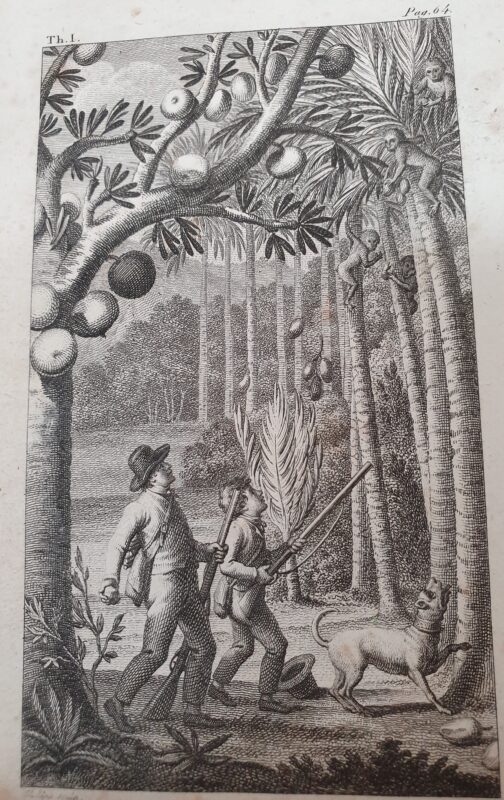
The Swiss Family Robinson is a beautiful example through which we can explore the history of illustrations. This retelling for young readers by Johnathan David Wyss was written in 1812 as a response to the worldwide success of Robinson Crusoe. It quickly gained popularity in England, France and Germany. It is a story of a Swiss family that sets off to the South Pacificto start a new life. A violent storm wrecks the ship before they reach their destination, yet they are providentially rescued and find themselves on a deserted island. They industriously organise themselves and soon grow so fond of the island to name it “New Switzerland”. Some members of the family decide to return to Europe in the end, but the rest remain on the island.
The story had a didactic purpose and was directed at young readers. Part of the appeal were undoubtedly the many colourful illustrations that increased in number and imaginative detail with each edition. Early editions featured illustrations that kept realistic conventions, reflecting the realist literary style in which the original novel was written. The technique of these first illustrations was etching, which allowed for preserving a truthful depiction of shadow and light, giving more depth to the images, while also depicting details. The original etchings by Daniel D. Burgdorfer and Johann Heinrich Lips were reproduced many times, well into the 21st century. In the late 19th century, illustrations in colour started to appear. First, these were copperplate engravings painted over with watercolours. Later, etchings became obsolete, and artists used different mediums.
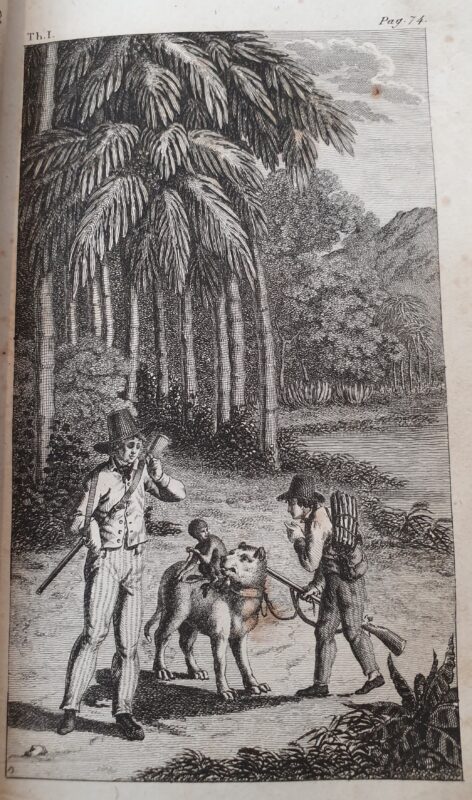
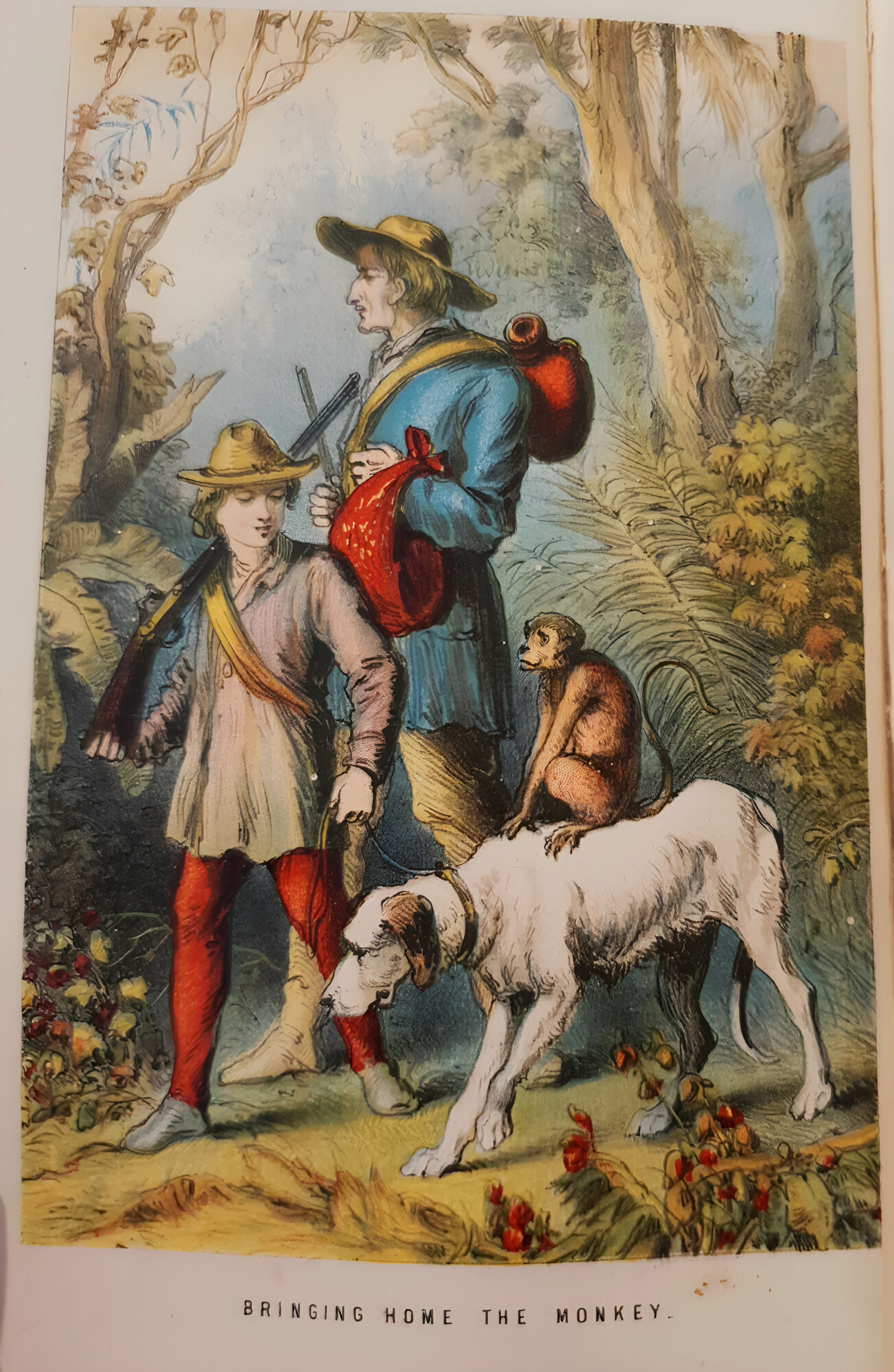
A drastic change in illustrative style occurred around the time of the Second World War: illustrators abandoned the traditional way of portraying the Robinson Family and began depicting them in a fashion deemed better suited for children. The style of illustrations became more simple, idealised, idyllic. The realist convention was replaced by illustrations that aimed at presenting the island as a friendly place: the colours are bright and vivid, the images more inviting, which probably made the illustrations more attractive to the young reader. While the images still create a sense of adventure, nothing in this world is problematic or dangerous.
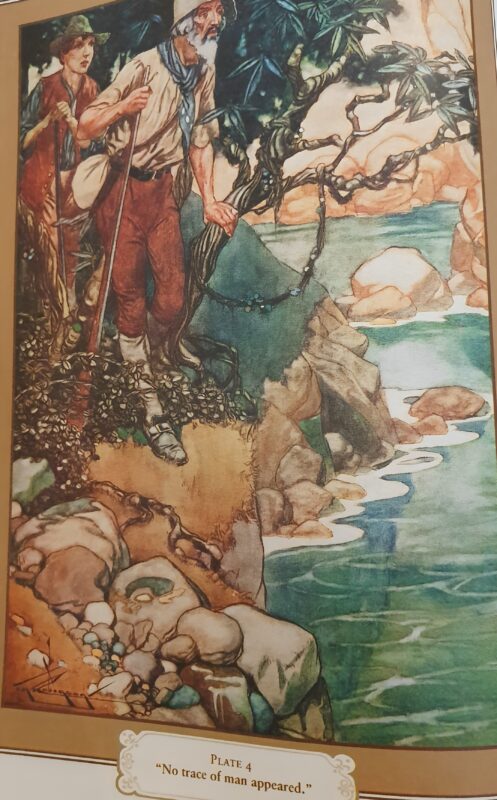
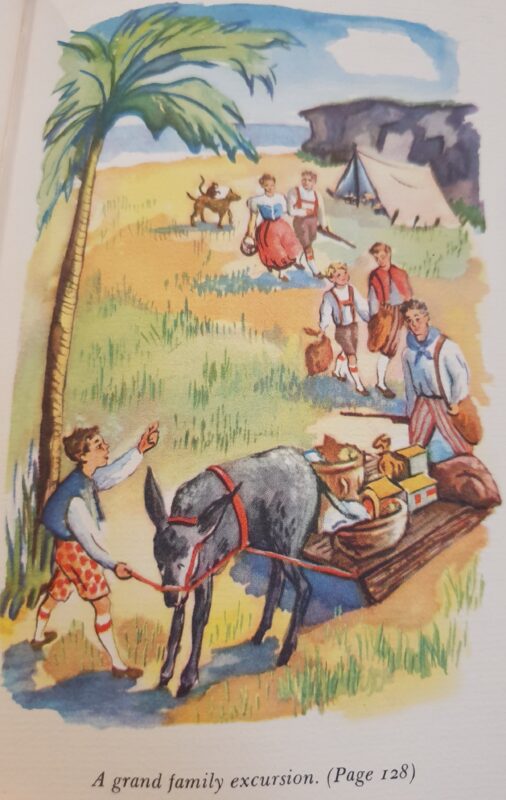
The two dominant themes that keep recurring through various editions of The Swiss Family Robinson over the last two centuries are portrayals of nature and the domestication of the island. The first editions from the early 19th century depict the flora and fauna of the island in an almost scientific fashion: they are realistic and often provide the nomenclature of the species depicted.
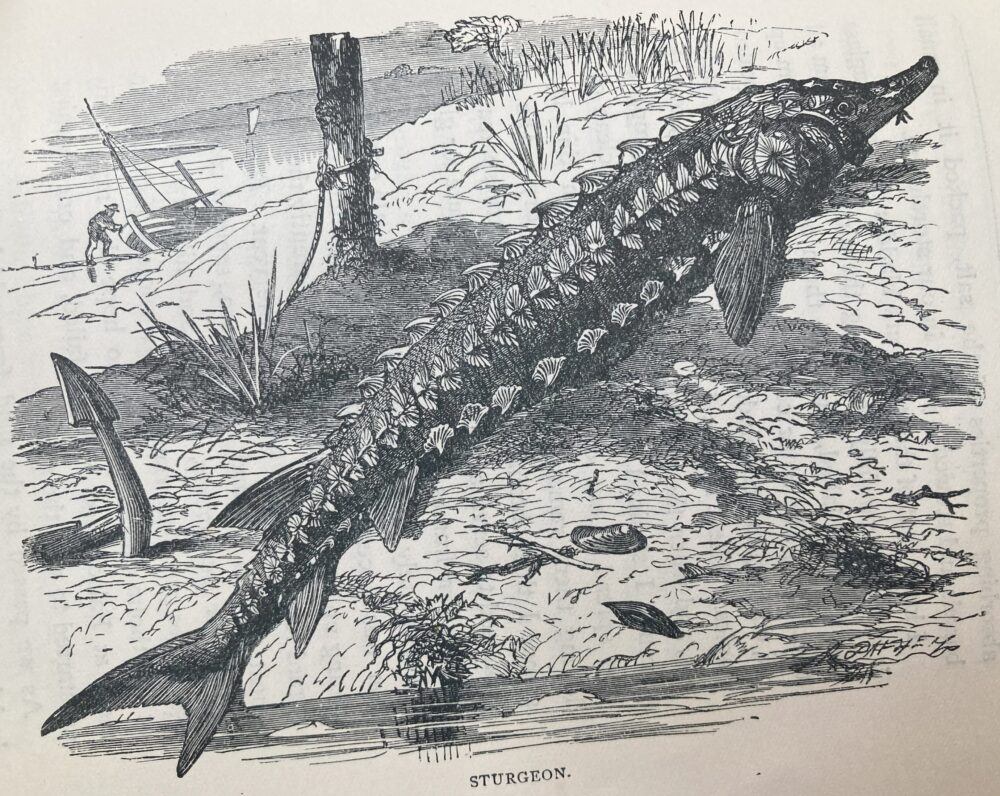
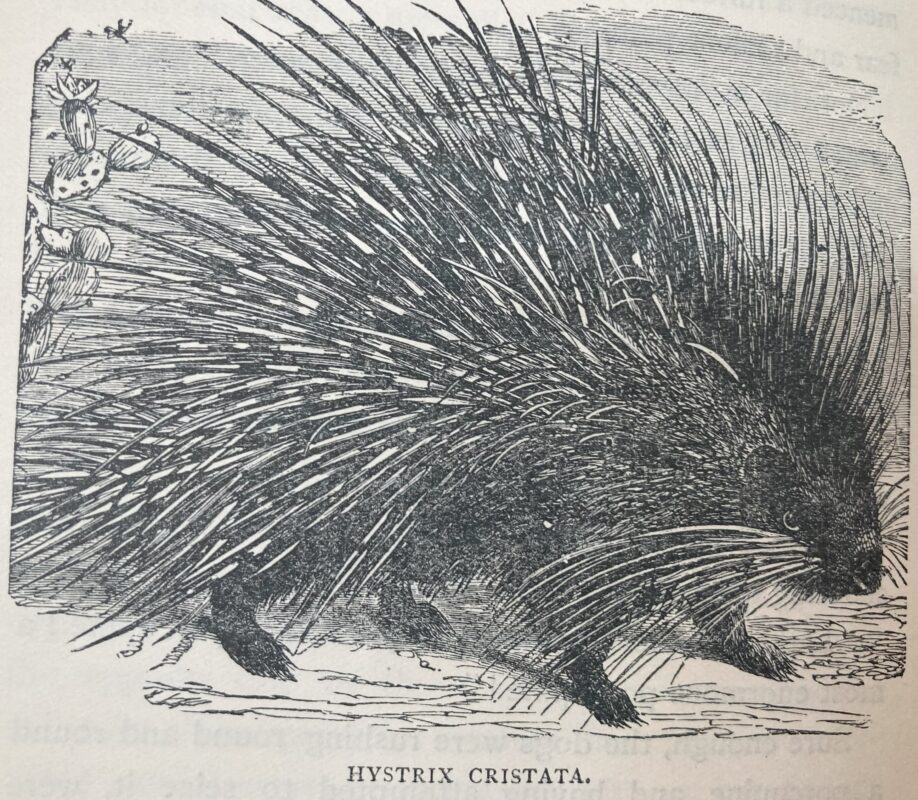
Later editions are more imaginative in their portrayal, focusing on conveying a certain sense of adventure or mystery that is to be found in the island’s nature. The second, even more prevalent, theme found in all editions is the domestication of the island. The earliest illustrations from the 1800s present the Robinson family as colonisers. We see gentlemen in top hats and gloves in the middle of a jungle. Depicted during hunting, accompanied by dogs, Robinson and his sons are presented on these illustrations as wealthy landowners engaged in the typical pastime of the English gentry.
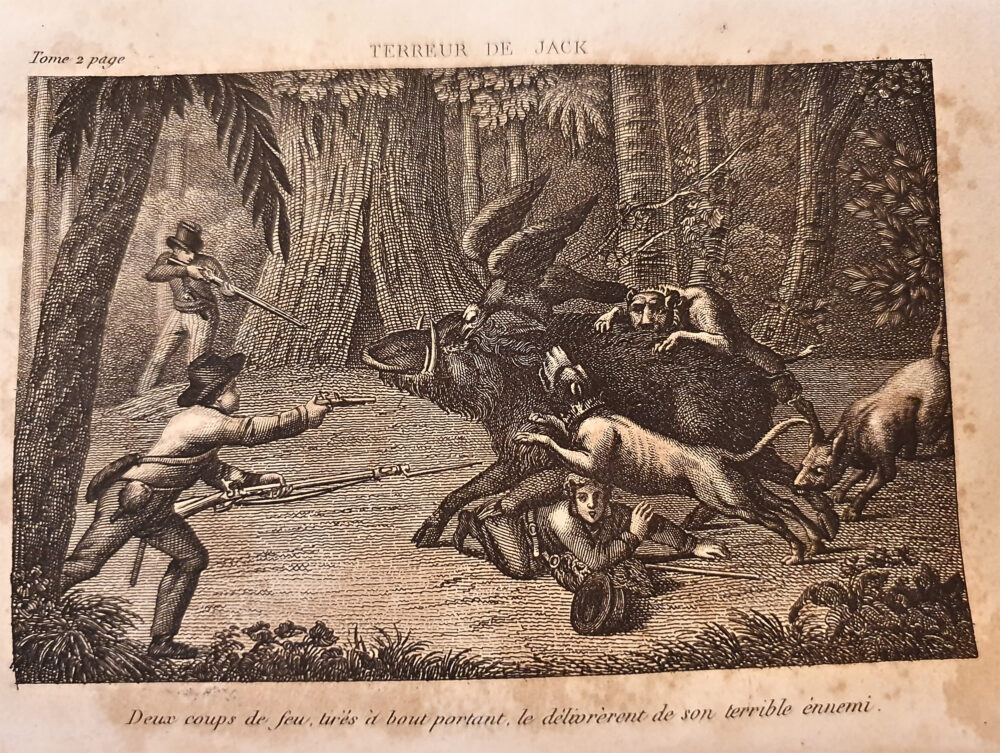
Modern editions still portray the family as industriously establishing order on the island, yet their relation to the land has changed. They are now depicted as countryside people leading a life of simple comforts, and work is one of their pleasures. The Robinson family is shown performing various tasks familiar from the original novel: they hunt and fish, construct the tools they need, build a bridge or ladder to climb a tall tree, or domesticate animals of the island.
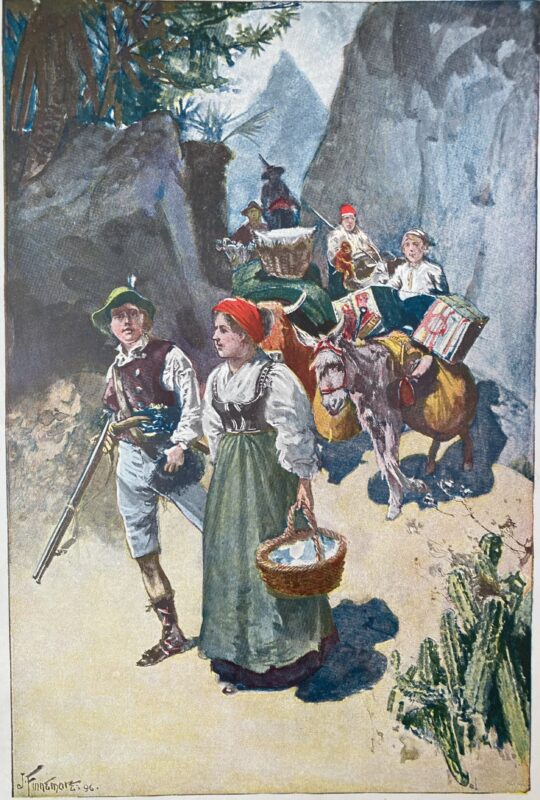
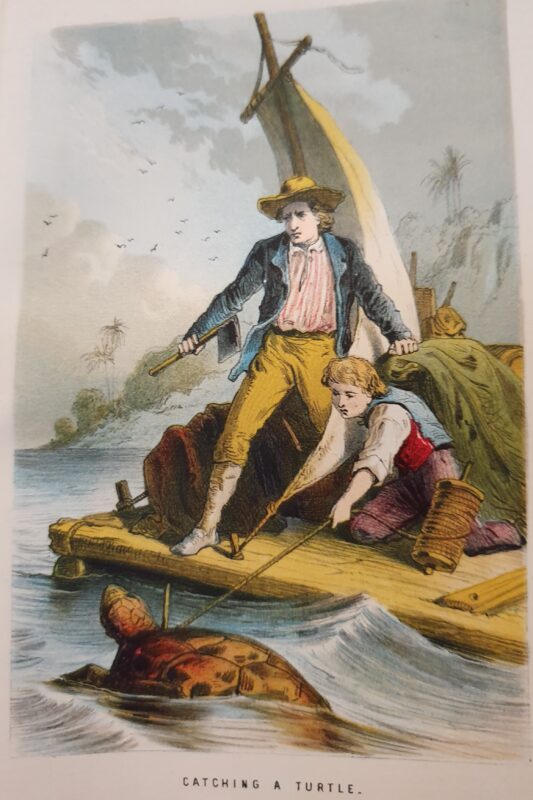
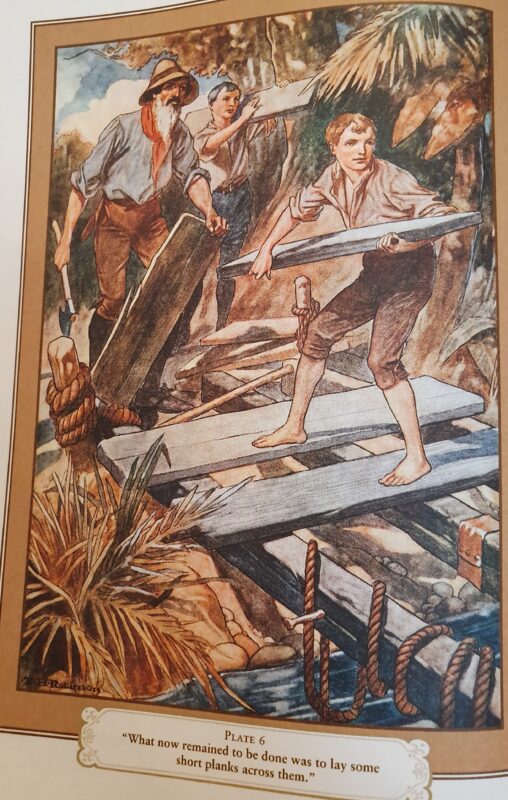
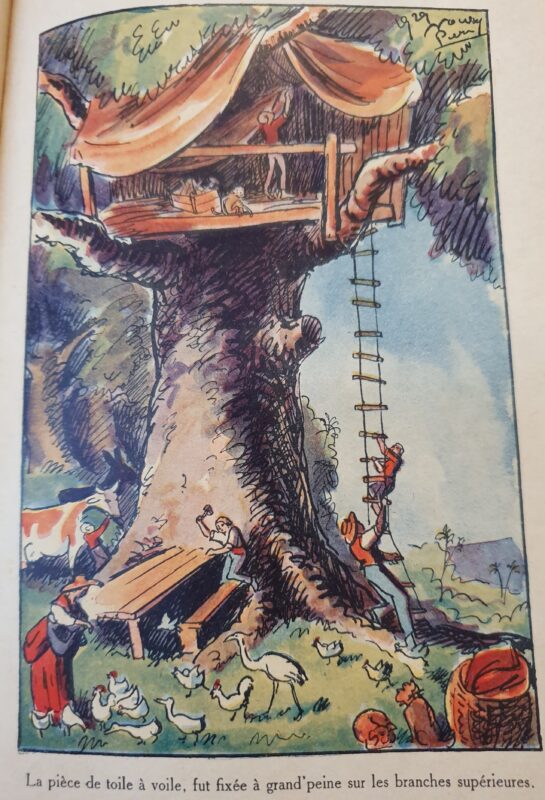
The latest portrayals in the archive show the family as contemporary adventurers. The family looks distinctly modern in their clothing and activities. There is no more violence depicted and the relationship with the island and its nature is presented in more innocent way. Even though these elements thus disappear from the images, they are nevertheless still present in the corresponding texts and stories.
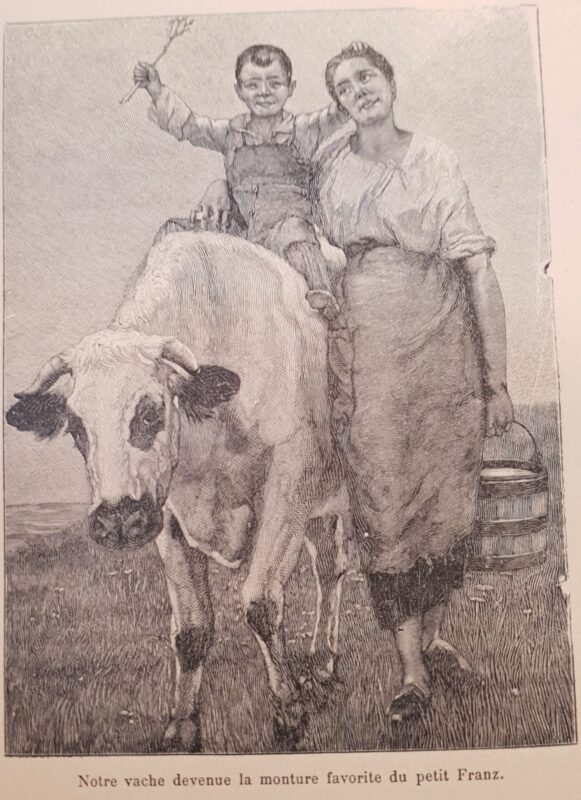
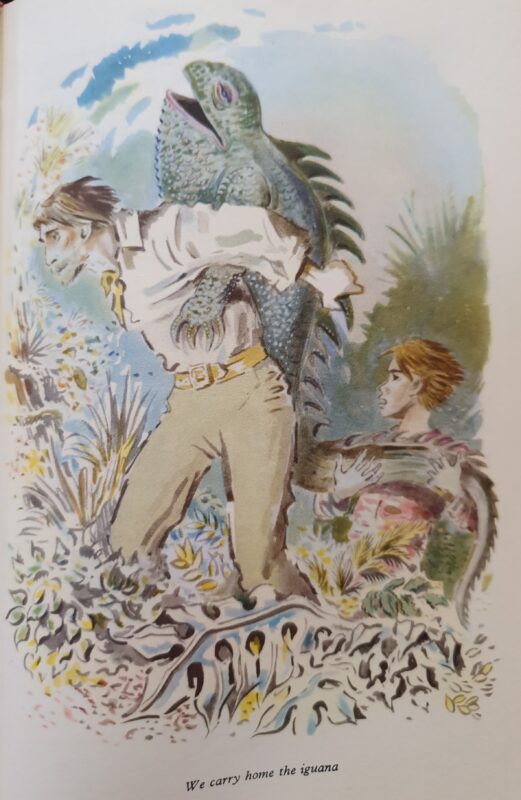
Text: Anna Lopata
Sources:
- Blewett, David. “The Iconic Crusoe: Illustrations and Images of Robinson Crusoe“. In The Cambridge Companion to Robinson Crusoe, ed. by John Richetti. Cambridge: Cambridge University Press, 2018. 159–190.
